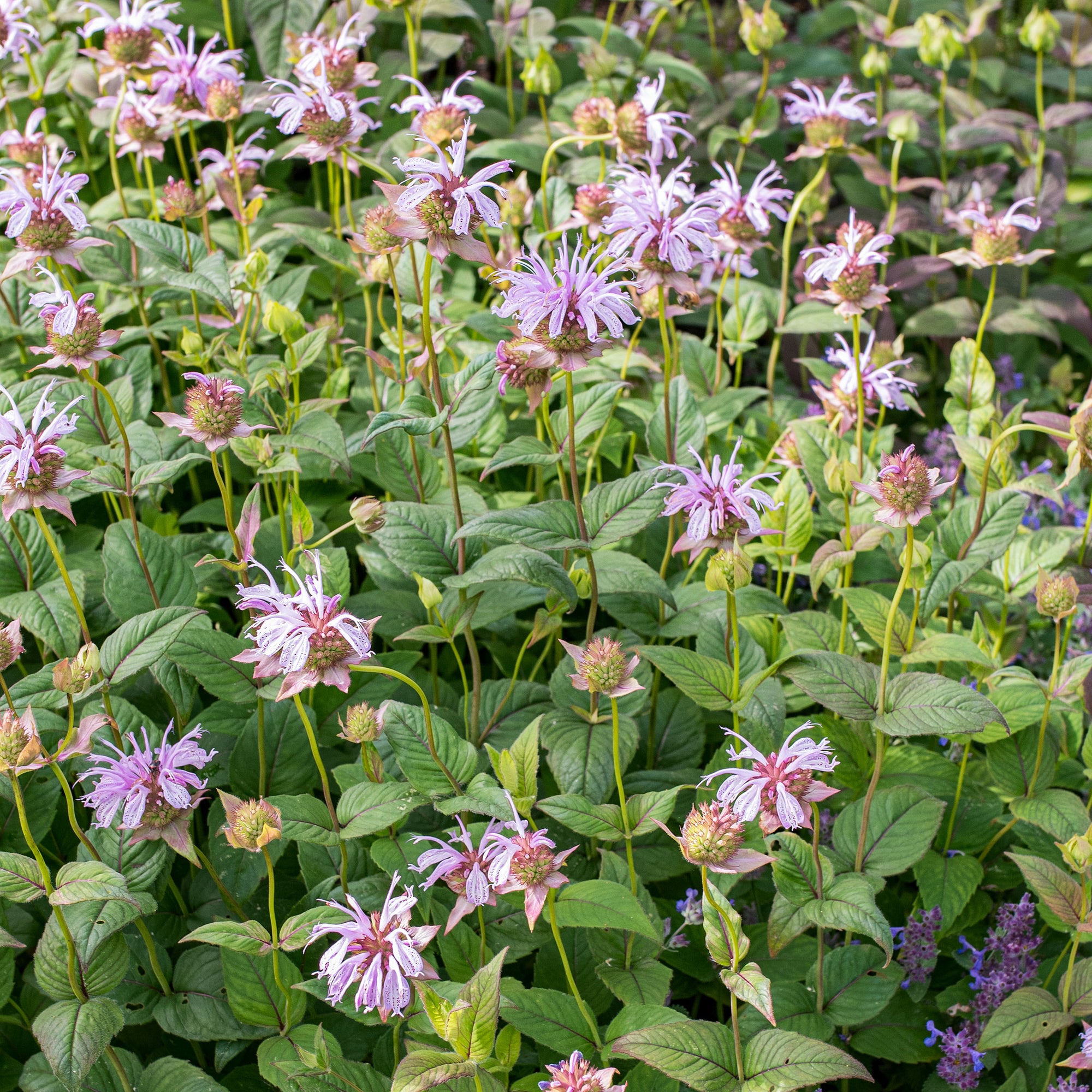SOWING INSTRUCTIONS
Depth:
Surface or barely cover.
Starting Indoors:
A moist stratification period of 30 days in the refrigerator may be beneficial but is not required for germination. Sow indoors 6-8 weeks before last frost Keep at 60-70°F, then after transplant, grow on cooler 55-60°F until setting outdoors.
Starting Outdoors:
Direct sow outdoors in spring or early fall.
WHEN TO SET OUTSIDE
This late spring blooming perennial can be placed in the ground in early spring in northern areas or early fall.
PLACEMENT & CULTIVATION
Attractive to hummingbirds, bees, and butterflies but not deer, early-blooming Eastern bee balm edges wild gardens and old-fashioned cottage and rock gardens in crowns of soft pink. Add a couple of inches of mulch for weed control and moisture retention when planting. Bee balm can spread quickly underground via rhizomes, horizontal underground stems that develop roots and new shoots. Divide in spring every few years or when the center dies out.
Watering Details:
Tolerates some drought but will be happier with regular watering; about 1" per week.
Fertilizer:
Each spring, apply about 1/2-1" of compost.
Diseases & Pests:
Bee balm is susceptible to mildew, but this species is resistant. Prevent disease by thinning and allowing for good air circulation around the remaining stems. Keeping soil evenly moist will also help to prevent this problem.
When to Cut for Bouquets:
Harvest when the flowers are nearly open.

































